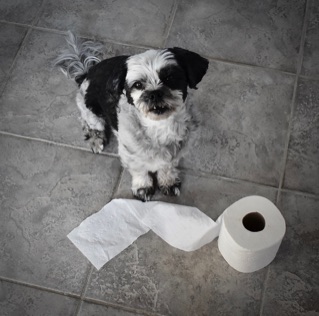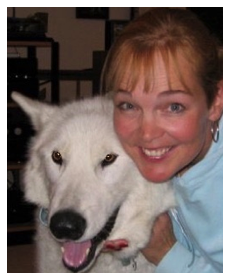This article is a summary only of a treatment protocol for house training your dog
For more information please call or text (303) 910-3931
Disclaimer: Please note that the information herein is provided as a free service. It does not create any form of legal or professional relationship and Affection & Praise Family Dog Training, Inc. does not accept any liability or responsibility for any action taken or avoided on the basis of information provided. It is dangerous to rely on generalized information or guidance. You should always seek independent professional advice in order that it can be tailored to your own individual circumstances.

Teaching your pup to hold it
If you have crate trained your pup, he will learn to hold it while he’s crated. Dogs do not like to hang out near their pee or poop (except for puppy mill pups) and therefore will make every effort to hold it while confined to a small space. For most dogs it’s fine to crate them at night and for up to four hours during the day. Take young puppies or elderly dogs out more frequently as they do not have the bladder control to hold it for very long.
Teaching your pup where NOT to go
This part is where most people get in trouble. Because dogs do not understand English, feedback has to follow their behavior within one second. That is very little time. If you were in a country where you didn’t speak the language, that one second rule would apply to you too. What if you were staying with a friend in Holland, and he came home, started yelling at you in Dutch, and then dragged you to the toilet and stuck you head in it. Wouldn’t be much fun, would it?
When your dog is not house trained yet, you need to watch him like a hawk when he’s running around on your carpets. Especially small dogs can get away from you very easily and make a small piddle before you know it. If you do catch your pup in the act, just say “ah, ah,” and take him out to his bathroom area immediately. Don’t come down on him too harshly. Plenty of dogs hide their pee or poop because they have learned that people go psycho on them when they go to the bathroom.
When you cannot supervise your pup, he should be confined to either a crate or an uncarpeted space like a laundry room, kitchen or bathroom, behind a puppy gate. Please make sure the gate has vertical bars only, as opposed to cross bars, so that your pup can't get hung up on it with his collar. We like this gate.
If you have a male dog who is marking, you can put a wrapper around his body when he is unsupervised on carpeted areas. Our favorite product is Peekeeper.com.
Accidents
If your dog does have an accident when you weren’t watching, don’t scold him. Unless you caught him in the act, he has no idea what you’re talking about anyway. Just clean up the mess with a cleaner that contains enzymes. Be sure to pour it on the spot liberally, as the enzymes cannot do their work if the liquid evaporates too quickly.
And for some perspective, just how long did it take your mama to potty train you?

Puppies generally have to go after eating or drinking, after waking up from a nap, and after any break in activity. It’s very helpful to give your pup a way to tell you that he has to go to his bathroom area, like ringing a bell. Of course we would be happy to help you teach your dog to ring a bell when he wants to go out.
House Training
House training your dog can make you want to pull your hair out at times, but whether you just got a new puppy or your dog is older already, all dogs can learn to go to the bathroom in the appropriate spot, rather than on your antique Persian rug. There are three things your dog has to learn: where to go, where not to go, and to hold it. How quickly your pup will learn these things depends on how strict you follow the program.
Teaching your pup where to go
Take your pup out to his bathroom area when you think he might have to go. Wait until right after he is finished and then praise him profusely. Don’t start praising him while he’s going because that could interrupt his important business.
Note: giving treats for going in the right spot could cause your dog to think that you just like him to pee or squat, which he could start doing every time he wants a treat. When they were teaching Shamu at Sea World to pee in a cup on cue (really!!), he started peeing at all the tourists hoping to score some fish.
